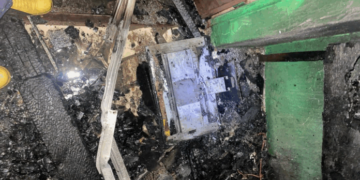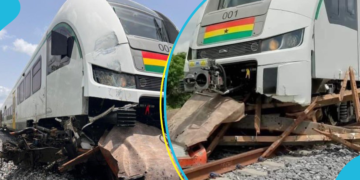![adome-bridge-533x330[1]](https://voicefmonline.com/vfm/site/wp-content/uploads/2015/12/adome-bridge-533x3301-300x186.jpg) Commuters on the Accra-Ho road can heave a sigh of relief following news the iconic Adomi Bridge is expected to be reopened to traffic this Saturday.
Commuters on the Accra-Ho road can heave a sigh of relief following news the iconic Adomi Bridge is expected to be reopened to traffic this Saturday.
According to the Asuogyaman District Chief Executive, Apim Darko, work on the bridge is near completion and workers are putting finishing touches to it ahead of this weekend. “I can confirm that work is almost complete. About last week we had a site meeting and there is every indication that they have finished with the work.”
“They are cleaning up the place and putting finishing touches to it,” he added.
Mr Darko went on to state the bridge will be open to traffic immediately after it is commissioned by President John Mahama this weekend on Saturday December 19.
He said, “The commissioning has been scheduled for Saturday the 19. We are expecting his Excellency [President Mahama] to come and then commission so we can start using the bridge again.”
“The bridge will be opened to traffic immediately after President John Mahama commissions it,” he continued.
The Adomi Bridge was closed to vehicular traffic to allow major rehabilitation on March 14, 2014.
The rehabilitation work on the bridge cost Ghana an estimated €13 million.
The aftermath of the closure of the bridge saw drivers and passengers facing various problems in their efforts to commute between the Eastern and the Volta regions of the country.

There were technical problems with one of the two pontoons purchased by the Ministry of Roads and Highways to convey vehicles, people and goods across the Volta Lake further complicating the once simple commute across regions. The idea to construct the Adomi suspension bridge in 1957 was necessitated by the need to link the Volta Region some parts of the Eastern Region that were cut off from the rest of Ghana. Prior to the construction of the bridge, travelers to and from those parts Ghana had to cross the Volta Lake on boats at Senchi. The Adomi Bridge was therefore built across the Lake at Atimpoku up north of Senchi in 1956 to ease the burden of travelers. The bridge was designed and completed by William Brown, of the engineers Freeman Fox & Partners.

































